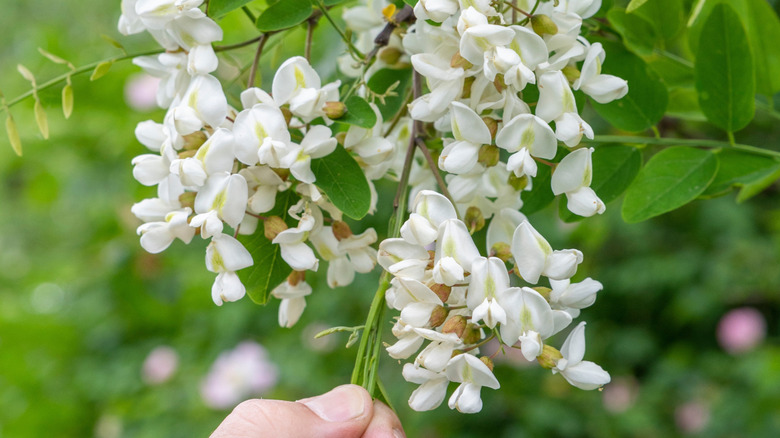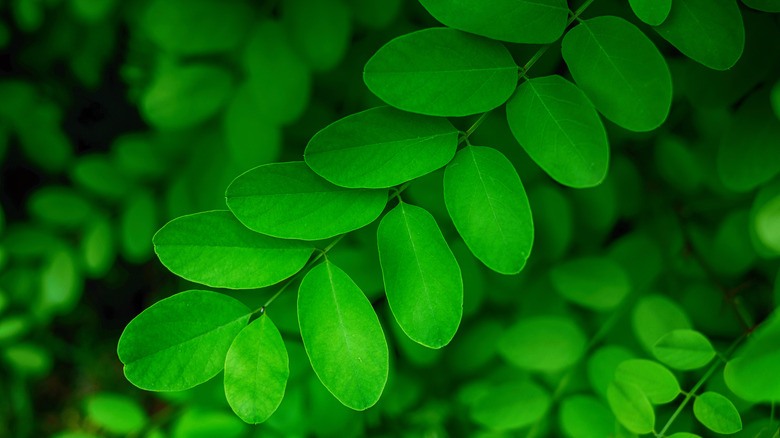Easily Identify Any Invasive Black Locust In Your Yard With These Tips
Black locust trees might not be the most obvious invaders in your yard, but their stealthy nature makes them worth identifying. A native of the Appalachian and Ozark regions, black locusts have spread well beyond their original habitat, thriving in poor soil and rapidly overtaking native plant species. Their adaptability is rivaled by other invasive species like the tree of heaven, which earned its name for its ability to grow in nutrient-deprived soils. However, black locusts have a distinctive profile you can learn to identify.
Start with the bark. Mature black locust trees have deeply furrowed, dark gray or brown bark that looks rugged and gnarly. Young trees may show smoother bark but will still have a characteristic reddish hue. Leaves are compound, with 7-19 small oval leaflets arranged along a central stem. The flowers, often seen in late spring, are creamy white or rose pink and grow in drooping clusters. These fragrant blossoms may remind you of garden honeysuckles, but don't confuse them — black locust is much more problematic.
Pay close attention to where it's growing. Black locust trees thrive in disturbed areas like roadsides or abandoned lots. They're known for their ability to fix nitrogen, a trait that enables them to dominate over native flora. Misidentifying this tree could allow it to spread unchecked, much like the burning bush, a vibrant but harmful ornamental shrub introduced to the U.S. in the 1860s.
What makes black locusts an environmental menace
Identifying black locusts is just the first step; understanding their invasive tendencies is equally critical. Black locusts, like the burning bush and Japanese honeysuckle, often appear attractive but have a darker ecological impact. They grow aggressively, producing dense thickets that choke out native plants and alter ecosystems.
One of the most telling signs of a black locust's invasive streak is its suckering root system. These roots allow the tree to clone itself, leading to dense stands that are hard to remove. If you've noticed clusters of trees with similar traits, they could very well be black locusts. Unlike trees that require fertile ground to flourish, black locusts can thrive almost anywhere, a trait shared with the aforementioned tree of heaven. This resilience makes them both persistent and destructive.
Be cautious of black locust's thorny branches. Unlike beneficial natives or harmless ornamentals, black locust branches often feature small, sharp spines. These thorns, combined with the tree's rapid growth, make it a formidable opponent in restoration efforts. It is this combination of features — thorny branches, nitrogen-fixing roots, and aggressive suckering — that sets black locust apart as a species to watch out for. While its fragrant flowers might seem appealing, this tree's environmental costs far outweigh its aesthetic value.

